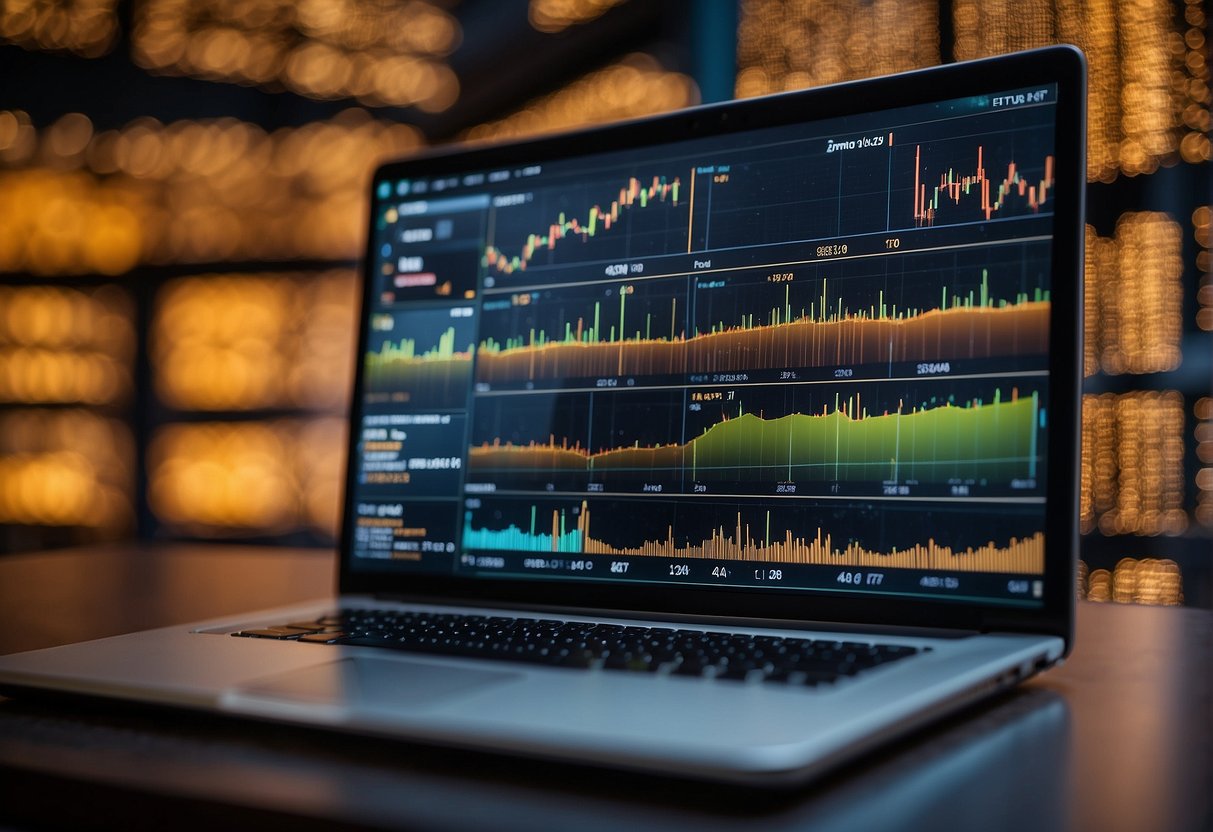Investing in alternative assets, such as Bitcoin, real estate, and art, has become increasingly popular as investors search for ways to diversify their portfolios beyond traditional stocks and bonds. Exchange-traded funds (ETFs) offer a convenient way to gain exposure to these alternative assets without the challenges of direct ownership. By selecting ETFs focused on specific alternative investments, investors can easily tap into potentially lucrative markets with lower costs and increased liquidity.
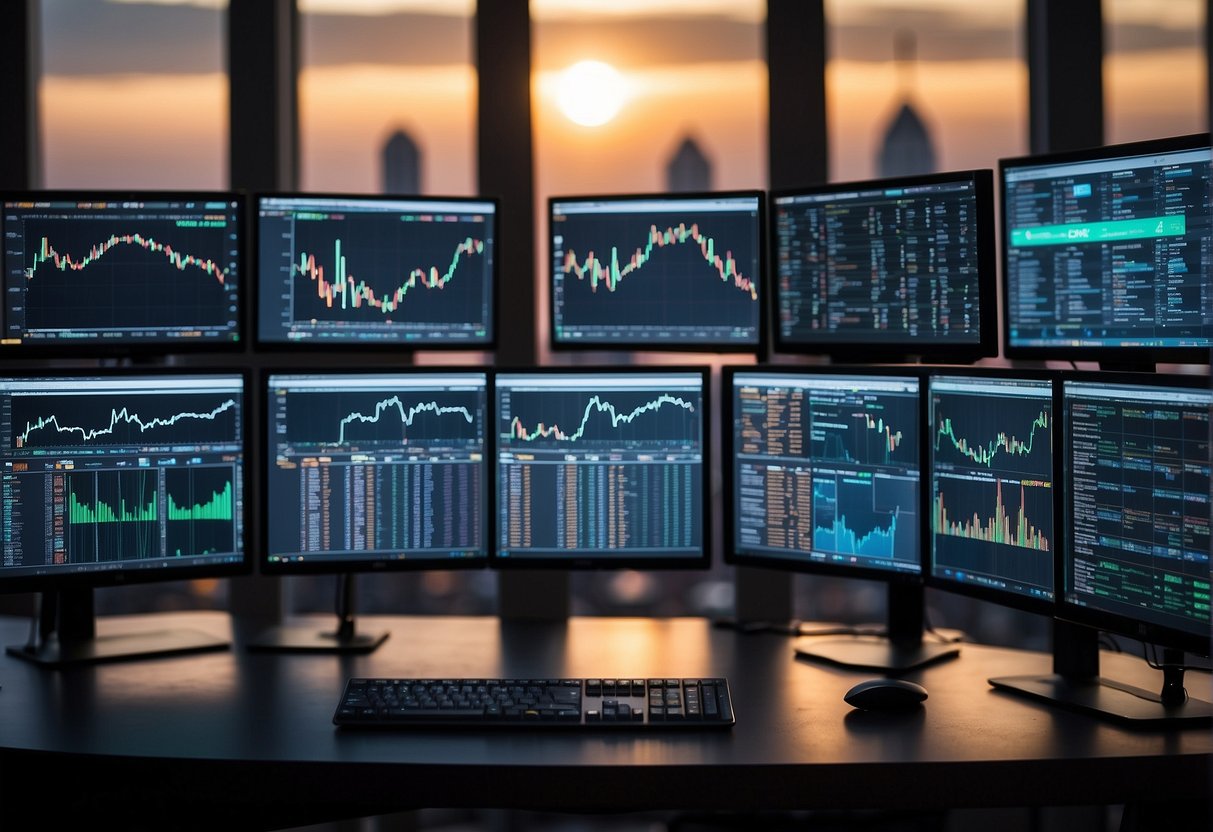
Understanding the relationship between ETFs and alternative assets is crucial for investors looking to broaden their horizons. ETFs offer access to unique asset classes that may have been previously inaccessible to the average investor. By using ETFs as an investment vehicle, individuals can gain exposure to various alternative assets while mitigating some associated risks.
As the world of alternative investments continues to expand, investors considering a more diverse portfolio should carefully evaluate the opportunities afforded by ETFs. These exchange-traded funds provide a potential entrance to unconventional markets, always with the understanding that these ventures can come with higher risks and unique considerations.
Key Takeaways
- ETFs offer a convenient way for investors to gain exposure to alternative assets such as Bitcoin, real estate, and art.
- Understanding the relationship between ETFs and alternative assets can help investors diversify their portfolios and minimize risk.
- Investing in alternative assets via ETFs requires careful evaluation of the opportunities and risks associated with unconventional markets.
Understanding ETFs and Alternative Assets
Basics of Exchange-Traded Funds
Exchange-traded funds (ETFs) are investment funds that trade on stock exchanges. They are a convenient and popular investment option due to their flexibility, low cost, and ability to provide diversified exposure to different asset classes. ETFs combine the features of stocks and mutual funds, allowing investors to buy and sell shares throughout the trading day, just like stocks. An ETF holds a basket of underlying assets, such as stocks, bonds, or commodities, and seeks to track the performance of a specific index or market segment.
There are many types of ETFs, including index, sector, and commodity ETFs. Investors can also find alternative ETFs that provide exposure to alternative asset classes or investment strategies, which makes them an attractive vehicle for investing in alternative assets.
What Are Alternative Assets?
Alternative assets refer to non-traditional investments that typically fall outside traditional assets, such as stocks, bonds, and cash. These assets are known for their potential to provide diversification, reduce portfolio volatility, and generate higher returns in certain market conditions. Some standard alternative asset classes include:
- Real Estate: An investor can gain exposure to real estate through Real Estate Investment Trusts (REITs) or ETFs tracking real estate indices.
- Cryptocurrencies: Bitcoin, Ethereum, and other cryptocurrencies are considered alternative assets and can be accessed through dedicated cryptocurrency ETFs or blockchain-based ETFs.
- Commodities: Physical commodities like gold, silver, and oil can be invested in commodity ETFs or futures contracts.
- Art: Fine art investments can be made by purchasing art directly or investing in ETFs holding fine art.
Investing in alternative assets using ETFs allows investors to access these asset classes with lower barriers to entry, diversification, and professional management while maintaining the liquidity and convenience of traditional investment vehicles.
Benefits of Investing in Alternative Assets via ETFs
Diversification and Risk Management
Investing in alternative assets such as Bitcoin, Real Estate, and Art through ETFs can offer significant diversification and risk management benefits. These assets often have low correlations with traditional investments like stocks and bonds, which can help reduce overall portfolio risk. For example, allocating a portion of your investment to alternative assets can help protect your portfolio during market downturns that predominantly affect traditional asset classes. Furthermore, including alternative assets in a well-diversified portfolio can enhance returns while mitigating risks.
Accessibility and Liquidity
One key benefit of investing in alternative assets through ETFs is the increased accessibility and liquidity they offer. Many alternative investments, such as Real Estate and Art, can be expensive and require significant capital outlays. In contrast, alternative asset ETFs allow investors to gain exposure to these assets at a fraction of the cost. Additionally, ETFs are traded on major exchanges, which means they are typically more liquid than their underlying alternative investments. This feature allows investors to buy and sell their investments quickly as needed, making alternative asset ETFs a more flexible and manageable investment option.
In summary, investing in alternative assets via ETFs offers significant benefits in diversification, risk management, accessibility, and liquidity. By incorporating these assets into your portfolio using ETFs, you can potentially enhance your investment returns while mitigating risks and maintaining flexibility in your investment strategy.
Risks and Considerations
Understanding the Volatility
Alternative assets like Bitcoin, Real Estate, and Art can be more volatile than traditional investments like stocks and bonds. Therefore, it is crucial to understand the nature of their volatility. Bitcoin, for example, is known for its dramatic price swings, sometimes even within a single day. Real Estate values can be affected by market conditions and economic factors. At the same time, the price of fine art depends on factors such as rarity, demand, and the perception of value.
To manage this volatility, consider diversifying your portfolio by investing in a mix of alternative and traditional assets. This can help reduce the overall risk to your portfolio and potentially provide a more stable return on investment.
Fee Structures and Costs
When investing in alternative assets through ETFs, it is essential to understand the fee structures and costs associated with these investments. Alternative ETFs often have higher fees than other ETFs due to the unique properties and strategies involved in managing these funds.
Below is a list of fees that you may encounter when investing in alternative asset ETFs:
- Management fees: The fee charged by the ETF provider for managing the fund.
- Custodian fees: Fees associated with holding the underlying assets, such as storage costs for gold or art.
- Trading fees: Costs related to buying and selling shares of the ETF on an exchange.
- Expense ratio: The fund’s total annual operating costs are are a percentage of its average net assets.
Example: If an ETF has an expense ratio of 1.0%, and an investor has $10,000 invested in the fund, the annual fees would be $100 (10,000 x 0.010).
Look out for these fees and compare them to similar investment products to opt for suitable alternative asset ETFs. Monitoring the costs can help maximize profits and minimize the impact of fees on overall returns.
Investing in Bitcoin through ETFs
The Evolution of Bitcoin ETFs
Over the years, cryptocurrency investments have moved from niche markets to mainstream financial channels. One milestone in this progression is the introduction of Bitcoin ETFs, which offer investors exposure to the digital currency without directly buying or holding bitcoins. These ETFs enable investors to delve into cryptocurrencies conveniently while mitigating associated risks conveniently.
The U.S. Securities and Exchange Commission (SEC) has finally approved several spot bitcoin ETFs, with numerous options for investors. Among popular choices, you may find funds such as the ARK 21Shares Bitcoin ETF and the Fidelity Wise Origin Bitcoin Fund, which have various fee structures and asset management approaches. Researching and comparing different funds is essential to select the best-suited ETF for your investment strategy.
Potential Returns and Risks of Bitcoin
Bitcoin ETFs present both potential returns and risks, much like any investment. On the one hand, the historical performance of Bitcoin has showcased impressive returns, solidifying its position as a lucrative alternative asset. The continuous mainstream adoption and increasing market interest suggest a bullish trend for this cryptocurrency in the long run.
However, it’s crucial to understand that investing in Bitcoin ETFs also comes with its fair share of risks. The cryptocurrency market is known for its volatility, which can lead to sudden price fluctuations. Furthermore, as the regulatory landscape around cryptocurrencies remains in flux, the future impact of potential regulations remains uncertain.
While considering an investment in a Bitcoin ETF, here are some key factors to weigh in:
- Volatility: Expect frequent swings in the value of your investment because of the inherent price instability of cryptocurrencies like Bitcoin.
- Regulatory risk: Although introducing ETFs has brought some legitimacy to cryptocurrencies, the regulatory environment remains unpredictable and can impact your investments.
- Fee structures: Many bitcoin ETFs have management fees and potential tax implications, which can affect your overall returns. Be sure to research and factor these costs into your decisions.
In conclusion, Bitcoin ETFs offer investors a diversified and accessible way to participate in the cryptocurrency market. However, it is essential to exercise caution and conduct thorough research to mitigate potential risks while aiming for returns on your investment.
Real Estate Investment with ETFs
Benefits of Real Estate ETFs
Real estate ETFs offer investors an easy and convenient way to gain exposure to the real estate sector without purchasing and managing physical properties. They provide a diversified basket of real estate securities, reducing the risk of investing in individual stocks. Moreover, real estate ETFs offer liquidity, as they can be bought and sold like any other ETF on the stock exchange.
Another benefit of investing in real estate ETFs is the income potential, as most of these funds invest in Real Estate Investment Trusts (REITs), which typically distribute a significant portion of their income as dividends. This can be an attractive feature for income-seeking investors.
Types of Real Estate Investment Trusts (REITs)
Various real estate investment trusts (REITs) can be found in a real estate ETF, each focusing on different property sectors. Here is a brief overview of some common types of REITs:
- Office REITs: These trusts invest primarily in office buildings and lease spaces to various businesses. Examples include high-rise offices in major cities, suburban office parks, and coworking spaces.
- Residential REITs: Focused on apartment buildings and multifamily housing, residential REITs typically invest in properties in urban and suburban areas with high demand for rental housing.
- Industrial REITs: Investing in warehouses, distribution centers, and other industrial properties, these REITs cater to the needs of businesses that require storage and logistics facilities.
- Retail REITs: Retail REITs invest in shopping malls, outlet centers, and other retail properties. They generate income from rent paid by store tenants and may face challenges from e-commerce and changing consumer preferences.
- Healthcare REITs: As the name suggests, healthcare REITs invest in various medical facilities, such as hospitals, medical office buildings, and senior living facilities catering to the needs of an aging population.
Real estate ETFs may focus on one property sector or invest across several sectors, depending on the investment strategy. By combining exposure to multiple REITs, investors can access a diversified portfolio of alternative assets and potentially enhance their overall investment returns.
Incorporating Art into Your Investment Portfolio

Art ETFs and Market Growth
The demand for alternative investments like art has steadily grown, and investors have sought ways to incorporate art into their portfolios. One of the strategies to access the fine art market is through Art ETFs (exchange-traded funds), which provide exposure to a diversified group of artworks. By investing in an Art ETF, you benefit from portfolio diversification and potential returns without the high costs typically associated with purchasing individual art pieces.
Here’s a brief overview of Art ETF components:
- Diversification: Art ETFs expose various artists, styles, and periods.
- Liquidity: Art ETF shares are traded on stock exchanges, making them more liquid than tangible artwork.
- Accessibility: Art ETFs have lower investment minimums than directly owning fine art, enabling broader participation in the art market.
Art as an Illiquid Asset
Investing in physical artwork directly entails different considerations, as art is generally considered an illiquid asset. Illiquid assets are more challenging to trade quickly than common assets like stocks or bonds. The artwork has unique characteristics that contribute to its illiquid nature:
- Valuation: The valuation of a piece of art depends on several factors, including the artist, provenance, rarity, and market demand, making it subject to potential fluctuations and challenging to appraise accurately.
- Transaction costs: Buying and selling art often involves high commissions or transaction fees, which can erode potential gains.
- Storage and maintenance: Artwork requires proper storage and maintenance to preserve its value, potentially adding to the overall cost of ownership.
Despite its illiquid nature, many investors still seek to include fine art in their portfolios for its potential long-term appreciation and ability to diversify their investments further. However, investors must understand the risks and challenges associated with investing in such an illiquid asset class and weigh them against the potential benefits.
The Role of Commodities and Precious Metals
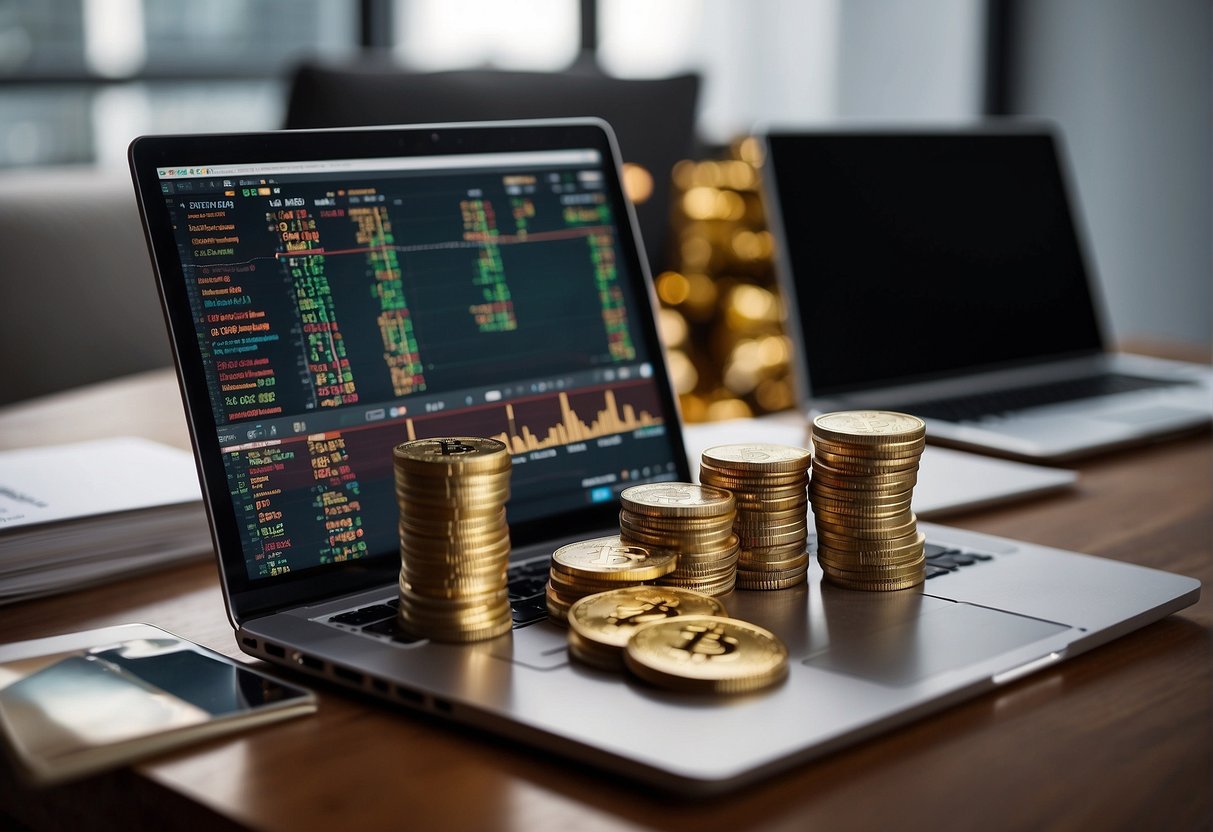
Gold and Silver in Alternative ETFs
Investing in precious metals like gold and silver can be easily achieved through ETFs. Some precious-metal ETFs purchase physical commodities—such as bars of gold or silver—and warehouse them in secure vaults. These ETFs tend to closely track the spot price of the commodity in question because the metals can be retrieved and sold on the spot market at any time.
Here is a list of example precious-metal ETFs:
- Gold ETFs
- Silver ETFs
One popular strategy when investing in precious-metal ETFs is to allocate a percentage of the portfolio to gold and silver, depending on an investor’s risk appetite and convictions.
Commodities as a Hedge Against Inflation
Commodities, in general, can be a valuable addition to an investment portfolio, especially as a hedge against inflation. As global economies grow and consumer demand increases, commodity prices often rise, making these assets a valuable inflation hedge.
A vital aspect to consider when investing in commodities is that they usually have a low correlation with traditional assets like stocks and bonds. This makes them an attractive addition to a diversified portfolio, which can help reduce overall risk.
It is worth noting that alternative investments like real estate and art can also be accessed through ETFs. These alternative assets can further diversify a portfolio, enhancing its risk-adjusted returns.
In summary, commodities, precious metals, and other alternative assets can play an essential role in any investment portfolio by providing diversification, acting as a hedge against inflation, and offering potentially lucrative opportunities for savvy investors.
Venturing into Private Equity and Venture Capital ETFs
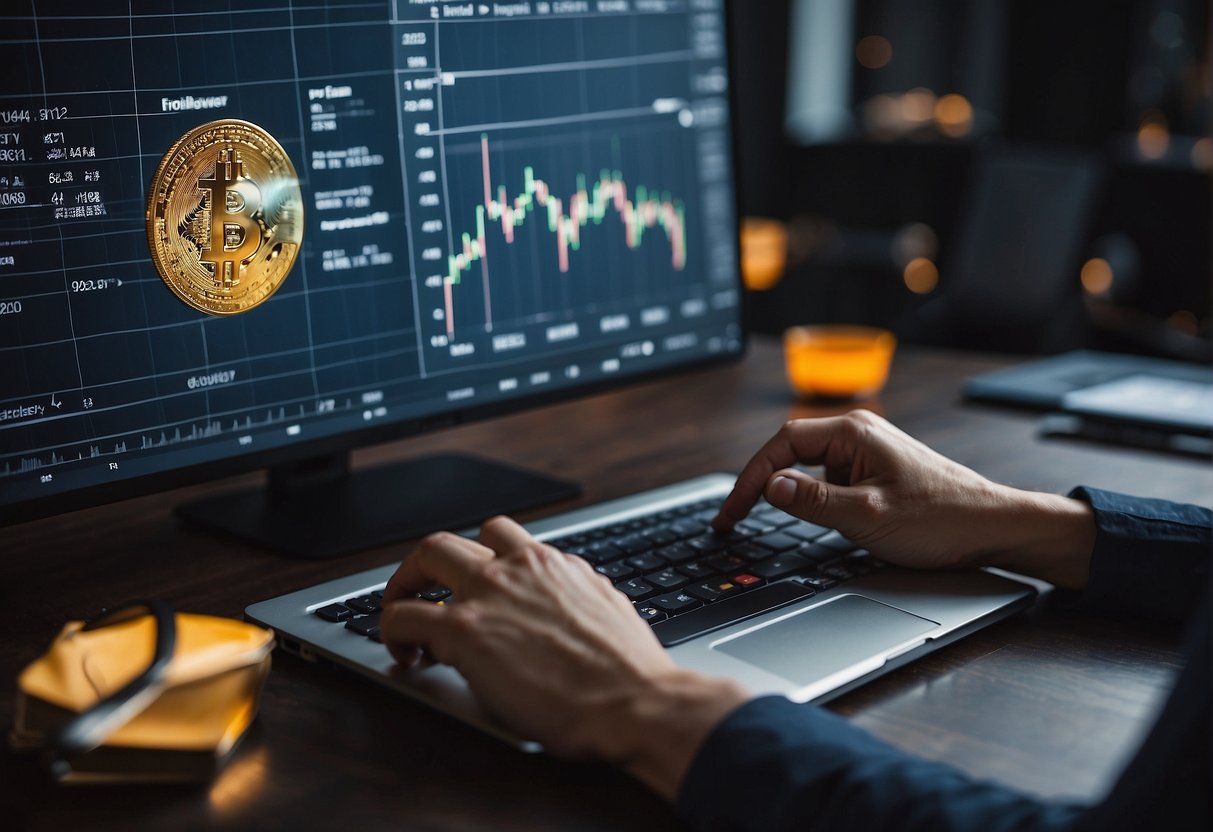
Understanding Private Equity ETFs
Private Equity ETFs offer a way for investors to gain exposure to the private equity asset class without investing directly in private companies. These ETFs typically invest in a diversified portfolio of private equity firms, thus providing investors with exposure to the overall performance of the private market. This investment strategy seeks to capitalize on the potential for higher returns and diversification benefits that private equity offers over traditional public equity investments.
Private equity ETFs can invest in various sectors, such as technology, healthcare, and real estate. They often have a higher risk profile than traditional stock and bond ETFs due to private markets’ illiquid and volatile nature. However, this higher risk can also lead to higher potential returns. Some popular private equity ETFs include:
- PowerShares Global Listed Private Equity Portfolio (PSP): Focusing on listed private-equity firms and related businesses.
- ProShares Global Listed Private Equity ETF (PEX): Tracks a global index of private equity companies.
The Growing Interest in Venture Capital ETFs
Venture capital ETFs are becoming increasingly popular among investors seeking exposure to the startup and innovation ecosystem. These ETFs focus on providing access to early-stage, high-growth companies with the potential for outsized returns. Venture capital ETFs offer diversification benefits and allow investors to participate in the potential gains of innovative businesses without investing directly in individual startups.
The interest in venture capital ETFs stems from the desire of many investors to access the innovative and disruptive power of technology, life sciences, environmental, and other types of startups. However, it’s essential to be aware of the inherent risks involved, as many startups fail or underperform compared to expectations.
Examples of venture capital ETFs include:
- ETFMG Prime Mobile Payments ETF (IPAY): Targets companies involved in mobile and electronic payment technologies.
- ARK Innovation ETF (ARKK): Invests in innovative companies within the blockchain, cloud computing, and genomics industries.
Investors interested in private equity and venture capital ETFs should consider their investment objectives, risk tolerance, and time horizons before investing. As with any investment, it’s essential to perform due diligence and consult a financial advisor to ensure alignment with one’s financial goals and circumstances.
Evaluating Managed Futures and Hedge Fund ETFs

Managed Futures Strategy ETFs
Managed futures are an alternative asset class that involves trading futures contracts on various commodities, financial instruments, and currencies. When investing in managed futures strategy ETFs, it is essential to understand their unique characteristics and risks. A popular managed futures ETF, the iMGP DBi Managed Futures Strategy ETF (DBMF), aims to replicate the average performance of the 20 most significant managed futures hedge funds.
Pros:
- Diversification: Managed futures have historically exhibited a low correlation to traditional asset classes, offering a potential diversification benefit.
- Market-neutral strategies: It seeks to profit from rising and falling market trends.
Cons:
- Complexity: Managed futures ETFs use sophisticated, quantitative models that can be challenging to understand.
- Costs: These ETFs may have higher fees than traditional equity or bond ETFs.
The Appeal of Hedge Fund ETFs
Hedge fund ETFs expose investors to the strategies employed by hedge funds in a more liquid and transparent format. A widespread hedge fund replication ETF, the iMGP DBi Hedge Strategy ETF, seeks to capture the average return of the top 20 most significant hedge funds.
When evaluating hedge fund ETFs, consider the following factors:
- Strategy: Understand the specific hedge fund strategies, such as long/short equity, event-driven, or risk parity.
- Performance: Assess historical performance and how closely the ETF has tracked its underlying index.
- Fees: Compare fees to other ETFs that provide similar exposure.
- Flexibility: Unlike traditional hedge funds, ETFs offer intraday liquidity, allowing investors to exit positions quickly.
In summation, managed futures and hedge fund ETFs can expose investors to alternative asset classes and strategies that may help diversify portfolios. However, investors should carefully evaluate these ETFs’ unique risks, benefits, and costs before making an investment decision.
Allocating to Natural Resources and Infrastructure
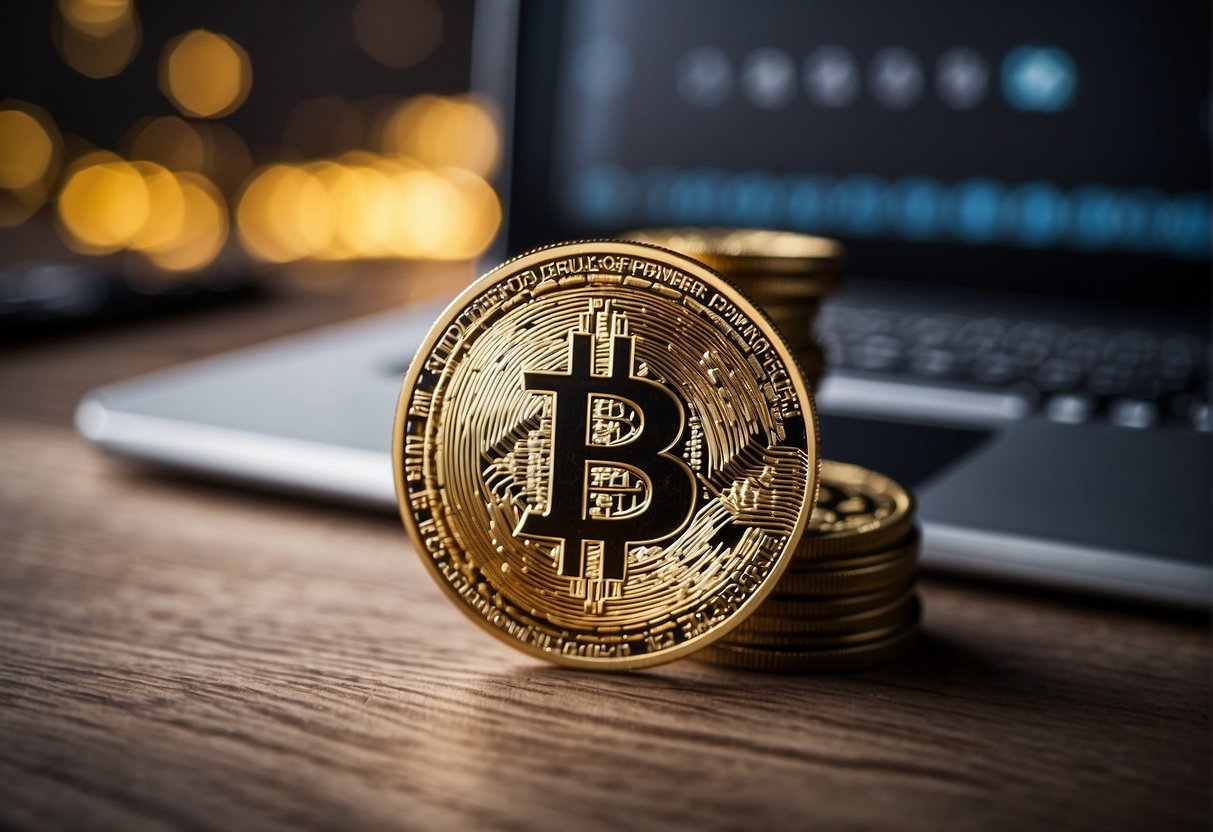
Investing in Energy and Raw Materials
Natural resources play a crucial role in the global economy, providing essential commodities such as energy, metals, agricultural goods, etc. Investors can tap into this asset class through ETFs focused on the energy and raw materials sectors. Some ETFs track indexes related to specific commodities, such as oil, natural gas, or precious metals, exposing investors to price movements without directly holding the physical assets.
For example, the SPDR S&P Oil & Gas Exploration & Production ETF (XOP) offers exposure to the oil and natural gas industry, while the iShares Silver Trust (SLV) focuses on the price of silver. When considering an allocation to natural resources, it’s essential to analyze the underlying factors of each commodity, such as global supply and demand, geopolitical risks, and technological advancements.
Diversification is critical when investing in energy and raw materials. Some investors may include a mix of ETFs covering different commodities and sectors to reduce the risk associated with concentrated investment in a single area. Additionally, ETFs that focus on renewable energy provide opportunities for investors to gain exposure to the transition toward more sustainable energy sources.
Infrastructure Investment through ETFs
Infrastructure investment can offer long-term, stable returns and diversification to a portfolio. Infrastructure assets include transportation systems, utilities, and communication networks, which are essential for the functioning of society. ETFs provide an efficient and liquid way to access the infrastructure sector.
The Global X U.S. Infrastructure Development ETF (PAVE) offers concentrated exposure to U.S.-listed infrastructure stocks. It’s essential to research the underlying assets held within the ETF, focusing on elements like the quality and stability of cash flows and the types of infrastructure represented.
When allocating to both natural resources and infrastructure through ETFs, consider the following factors:
- Risk tolerance: Allocate based on your risk appetite and financial goals.
- Investment horizon: Aim for a long-term perspective, as these assets tend to have more extended investment horizons.
- Diversification: Maintain a diversified mix of assets, giving adequate exposure to various sectors and geographic regions.
By incorporating alternative assets like natural resources and infrastructure into a portfolio through ETFs, investors can potentially benefit from robust returns, long-term stability, and enhanced diversification.
Exploring Unconventional ETFs: Wine, Farmland, and More

Wine as an Alternative Asset
Wine investment has become attractive for investors seeking to diversify their portfolios. Wine has shown potential for long-term appreciation and offers a unique way to invest in the market.
One method of investing in wine is through wine stocks. These stocks represent wine production and distribution companies, such as vineyards, wineries, and producers. Another option is to invest in wine funds, which pool resources from investors and invest in a diversified wine portfolio. Finally, there is the possibility of directly supporting wine bottles by purchasing high-quality bottles expected to be appreciated over time.
Unfortunately, there is currently no dedicated wine ETF available in the market. However, the closest alternatives can be found in wine funds and direct investment in wine bottles.
The Case for Farmland ETFs
Farmland is another alternative asset class that can provide diversification and potential long-term returns for investors. With rising global food demand and limited arable land, the value of farmland is expected to increase over time.
One of the most popular and extensive farmland ETFs is the Invesco D.B. Agriculture Fund (DBA). This fund invests in several natural agricultural resources, giving investors easy access to commodity futures. Remember that this fund may not suit every investor due to the risks associated with the futures market.
Other farmland ETFs are focused on specific agricultural commodities, such as the Teucrium Corn (CORN), Wheat (WEAT), and Soybean (SOYB) funds. These funds track the daily price of their respective futures contracts and offer a more targeted exposure to their underlying commodities.
To invest in farmland ETFs, a crucial first step is to choose a reputable broker that offers a variety of farmland ETFs on their platform. Such a platform can be found at eToro, a popular choice among many investors for its wide range of investment options.
By exploring alternative ETFs, such as those focused on wine and farmland, investors can achieve fresh diversification, strengthening their portfolios with unconventional assets that may offer promising long-term returns.
Frequently Asked Questions
What are the advantages of using ETFs for alternative asset investments?
ETFs offer several advantages for alternative asset investments, such as lower fees, diversification, and liquidity. They provide access to a wide range of assets, including Bitcoin, real estate, and art, allowing investors to mitigate risks and potentially benefit from various market conditions. Additionally, ETFs can be bought and sold on traditional stock market exchanges, making them more accessible and convenient for investors than directly investing in alternative assets.
How can investors use ETFs to gain exposure to the real estate market?
Investors can gain exposure to the real estate market through Real Estate Investment Trusts (REITs) ETFs. These ETFs invest in companies that own, operate, or finance income-producing properties, allowing investors to participate in the performance of the underlying assets without directly owning property. REIT ETFs offer diversification across property types and locations, potential income generation through dividends, and real estate market appreciation exposure.
What strategies exist for investing in Bitcoin through ETFs?
Investors can gain exposure to Bitcoin using Bitcoin ETFs, which track the value of the cryptocurrency1. There are two types of Bitcoin ETFs: physically-backed ETFs, which hold actual Bitcoin, and futures-backed ETFs, which invest in Bitcoin futures contracts2. Physically-backed ETFs provide more direct exposure to Bitcoin price movements, while futures-backed ETFs involve indirect exposure through contracts that speculate on the cryptocurrency’s future value. Each type has risks and rewards, so investors should consider their investment objectives carefully before deciding.
In what ways do art-focused ETFs provide access to the art investment market?
Art-focused ETFs offer investors exposure to the art market by investing in companies involved in art-related business activities, such as auctions, art production, or art storage and transportation. This allows investors to benefit from the potential appreciation of art as an asset class without directly owning or managing artworks. It also provides a level of diversification, as these ETFs often include a variety of art sectors and regions, mitigating the risks associated with the volatile art market.
How do alternative investment ETFs compare to traditional mutual funds and index funds?
Alternative investment ETFs are similar to traditional mutual funds and index funds in that they pool investors’ capital to invest in a diversified portfolio. However, unlike mutual funds, which investment professionals typically manage, many alternative investment ETFs are passively managed and track an index. This can result in lower expense ratios and more tax efficiency. Furthermore, ETFs trade like stocks, providing greater liquidity and the ability to buy and sell shares at market prices throughout the trading day.
What considerations should investors make when choosing ETFs for alternative assets?
Investors should consider the underlying assets, management style, expense ratio, and investment objectives when choosing alternative asset ETFs. Understanding the ETF’s strategy and considering factors like fees, liquidity, and risk levels is essential. Investors should also pay attention to diversification within the ETF itself and as part of their overall portfolio to ensure exposure to various alternative assets and minimize potential risks.
Footnotes
Conclusion
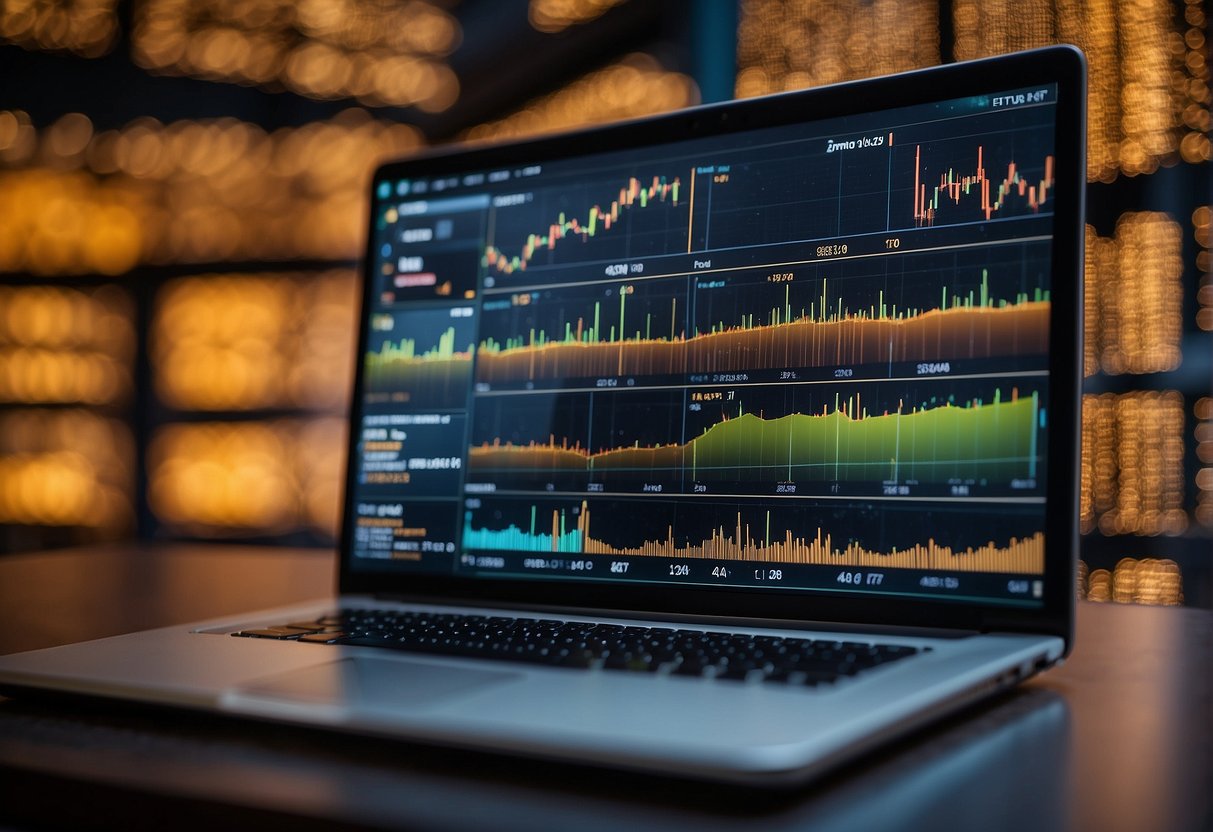
In summary, using ETFs to invest in alternative assets like Bitcoin, Real Estate, and Art can offer investors a diversified portfolio. This strategy can help spread risk across different asset classes while maintaining exposure to potentially profitable investment opportunities.
One advantage of using ETFs is their ease of accessibility. Investors can trade these funds on traditional exchanges like the New York Stock Exchange or the Nasdaq. Moreover, ETFs are generally more affordable and provide greater liquidity than direct investments in alternative assets.
However, it’s essential to consider the potential risks and fees associated with such investments. For example, some ETFs may track the performance of alternative assets through derivatives, which can introduce additional risks. Also, management fees for some alternative asset ETFs can be higher than traditional equity funds.
In conclusion, investors should carefully research and evaluate the following aspects before investing in alternative asset ETFs:
- Underlying assets and ETF’s investment strategy
- Expense ratios and management fees
- Past performance and potential risks
- Diversification benefits and correlation with other investments
By considering these factors, investors can make informed decisions and potentially benefit from the unique opportunities that alternative asset ETFs offer within a diversified investment portfolio.

